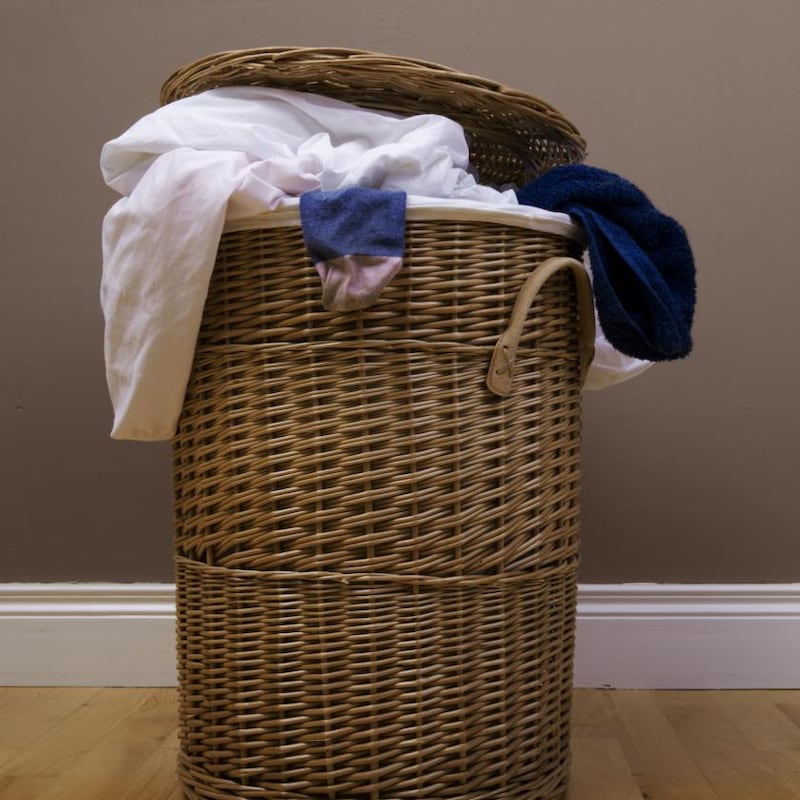My brother and I have a joke thanks to a Russian yoga teacher who said at the beginning of class: “We sweat when we train, so we don’t bleed at war.”
The combination of her delivery, perfect posture and the softly lit studio made us giggle. Her class made us sweat. A lot.
According to fashion lecturer Georgia McCorkill, sweat marks are left by “a combination of salts in the sweat and deodorant people are using”. She says, “sweat itself is a sterile thing but when it mixes with the bacteria on the skin, the odours we associate with sweat occur”.
When not handled correctly, sweat marks and odours can be stubborn. Here’s some advice on how to avoid them.
Wash your clothes promptly

Stains and odours are caused when bacteria forms on fabric, so the best thing to do is launder clothing soon after each wear. As McCorkill puts it: “The longer you leave sweat on clothing, the greater the bacterial growth.”
Ryan Mannix, a yoga teacher and former professional athlete, goes through "a lot of athletic gear washes". He recommends airing out clothes on the side of laundry baskets "so they're never sitting at the bottom sweaty" and machine washing everything on a cold cycle with a liquid detergent before hanging it out to dry.
McCorkill points out that it’s important to balance prompt washing with not over-laundering, which can be wasteful. She suggests wearing the same thing a few days in a row before putting it in the wash. A lot of athletic gear is made from synthetic fibres such as polyester and elastane, so consider using a washing bag to prevent microfibre pollution.
Sweat stains can be sneaky
McCorkill flags that sometimes stains on special-occasion wear, such as silk, aren’t immediately apparent so the garment is put away without dry-cleaning or laundering. If the fabric is particularly delicate, the sweat might cause a reaction over time, resulting in an odour or stain that appears months later. A quick hand wash or drop-off at the dry cleaner’s can prevent this.
When possible, wearing a cotton undershirt that can absorb underarm sweat and stand up to more frequent laundering may also help extend the life of collared shirts and silk blouses.
Spot clean the sweatiest areas
Founder of athleisure-wear brand Nagnata, Laura-May Gibbs, recommends “doing a spot clean right after you exercise” with a natural soap such as coconut oil or eucalyptus.
McCorkill agrees spot cleaning is a good idea because sweat stains can require more attention or higher temperatures than the recommended wash cycle for the rest of the garment. She suggests using “a laundry product designed for spot treating” but to be “careful not to rub too hard on fabrics that might snag or woollen fabrics that might felt”.

Choose natural fibres and natural deodorants
Due to their distinctive properties, natural fibres such as cotton, wool and silk react differently to sweat than synthetic fibres such as polyester and elastane.
McCorkill says polyester “has a complicated relationship with sweat because it absorbs the oily sweat from under the arms”, which causes long-term odour. “Everyone can think of a polyester top they’ve washed and put on again and it still smells,” she says.
This is in part because polyester has the same molecular make-up as plastic, so it doesn't breathe. A 2016 study from Norway found that even odour-control synthetic fabrics smell worse than natural fibres over time.
The way to avoid this is by choosing natural fibres such as cotton and wool that respond to the body’s temperature and reduce sweating. “The more natural the fibre, the less likely you are to produce an odour,” Gibbs says. The same goes for your deodorant, she adds: “When you take the aluminium out of your antiperspirant, you are less likely to produce sweat marks.”
When all else fails
McCorkill suggests cutting out stained armpits, or the portion of the fabric causing the odour, and replacing it with a patch of fresh fabric. In the case of polyester garments that have a persistent smell, the area could be replaced with a natural fibre, solving future problems.
If transforming a blouse into a sleeveless top or adding a cotton underarm gusset is beyond your sewing skills, these can be done easily by a professional tailor.
Perhaps unsurprisingly, Mannix and Gibbs both advocate for leaving sweat marks alone on gym gear. With a laugh, Mannix admits: “If there’s a stain, I usually leave it.”
Gibbs is adamant they should be worn with pride: “You worked hard for those sweat marks!” So hopefully now . . . you don’t bleed at war. – Guardian


















